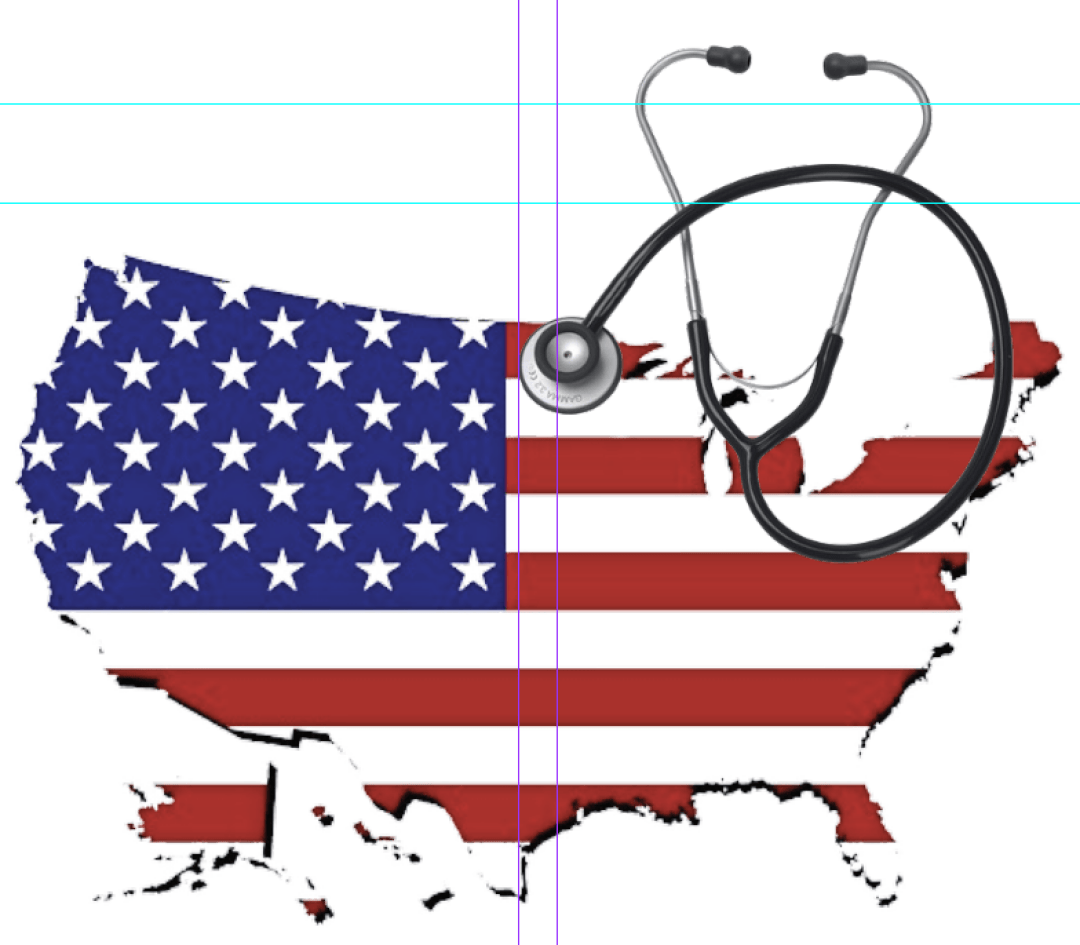American health care is on hospice
 Why does an American have a life expectancy of 60 to 95 years?
Why does an American have a life expectancy of 60 to 95 years?
Robert Kuttner of The American Prospect was in London for the next British general election and interview members of the Labour Party when he felt ill and went to the nearest clinic at 10 am. It happened to be at St Thomas Hospital of the National Health Service.
By 10:20 he had gone through a quick triage, filled out a form and was scheduled to see a doctor at 11 am. The doctor asked him for a short history, physically examined him, performed a couple of short tests, discussed the results, and assured Kuttner the whole thing was not serious—and shook his hand. Kuttner asked him for the bill.
“There is no bill, and you’re free to go,” said the doctor. (If he had needed treatment, he would have been billed for the true costs of the treatment.)
The National Health Service (NHS) was passed in 1945 after the war by the Labour Party, with the support of the conservative Prime Minister Winston Churchill. He felt the English people had suffered enough during the war. The NHS covers everybody, and always has had trouble funding it. The conservative opposition party, the Tories, have been trying to starve it out of existence since WW II.
Guess what party in the U.S. is also against universal care!
The NHS is always short of money while it gives priority to prevention and basic acute care. All social classes use the NHS because it provides excellent care, although members of the superrich do fly to America for treatment. You can’t get better care by paying privately. Britain is a poorer country than the U.S., but because of lifetime universal care, an English person lives four years longer (80.9 to 77.3) than an American. What is one year worth to you?
Britain spends 12% of its Gross National Product (GNP) or $180 billion on health care while the Divided States of America spends 20% of its GNP or $4.4 trillion on health care. About 80 million Americans have no insurance or are underinsured – and 60,000 die because they are too poor to seek service. Germany under Otto von Bismarck adopted universal care in 1883, the first nation in the world to do so.
All European nations have some form of universal care. Portugal passed a constitution in 1976 which established every citizen’s right to health care regardless of ability to pay. In France a citizen never sees a bill for health care. After consultation and treatment, the hospital or clinic sends the bill to the government for payment.
Yes, we spend an exceptional amount of money on capitalistic health care
The following costs per person for seven countries that have universal care and the U.S. costs per person for the capitalistic system employed by the U.S. is rather shocking when you consider the seven have life expectancies much longer than the U.S.
We have excellent care for the upper middle-class and the wealthy, but a terrible expensive mess for the poor and the lower middle-class. Annual spending per person, by country:
• United States-$12,914
• Germany-$7,383
• Sweden-$6,282
• France-$6,115
• Canada-$5,905
• Australia-$5,627
• Great Britain-$5,387
• Japan-$4,666.
In 2014 a committee of the National Research Council and Institute of Medicine reported that the United States had the lowest life expectancy of 22 high-income countries and higher morbidity and mortality rates for dozens of causes. The disparity had been growing since the 1950s and was affecting all Americans.
The report cited five areas of relative deficiency for the early deaths: “(1) unhealthy behaviors, such as our diets and use of firearms, (2) inadequate health care and public health systems, (3) poor socio-economic conditions, (4) unhealthy and unsafe environments, and (5) deficient public policies.”
What were the “deficient public policies”?
The fact that we didn’t have a universal care plan like all other industrialized countries. They outperformed us in every measure of health and well-being. The global pandemic of COVID-19 lowered our life expectancy for three consecutive years because white Americans more than people of color resisted vaccinations, masks, social distancing, business closures and added stupidity and political conspiracies to these causes.
The Divided States of America (DSA) had the highest death rate per capita of any high-income country – and the most deaths of any country. In America, people of color, working in jobs that required more exposure to the virus, also suffered devastating losses in life expectancy. One study indicated that we could have saved at least 338,000 people if we had a universal care system.
The DSA spent $4.4T on health care in 2023-and $1.1T was for administration
Countries with universal care of single-payer systems usually spend about 2% for administration. We spend more than 30%. We hire thousands of analysts to approve or disapprove billions in payments and claims to insurance companies, hospitals, doctors, nurses, staff and the underinsured. Docters use about 30% of their time writing and shuffling patient records.
When Senator Bernie Sanders says, “Let’s be clear,” we should listen to him: “The current health care system in the United States is totally broken, dysfunctional and cruel. We spend twice as much per capita as any other major country while 85 million Americans are uninsured or underinsured, one out of four cannot afford the cost of the prescription drugs doctors prescribe, and where 60,000 die each year because they don’t get to a doctor on time. It is a system in which some 500,000 people go bankrupt because of medically related debt.”
Here is more evidence from many sources:
1. Minnesota-based insurance giant UnitedHealth Group had $371.6B in revenue last year with a profit of $22.38B. Wouldn’t it have been wonderful to spend that profit on health care? Unless it is more efficient than other insurance companies, it would have spent another $90B on administration. It hires a lot of people to say “NO!”
2. More than 40% of American adults (100 million people) are frustrated by medical and dental bills and 500,000 file bankruptcy each year because of medical debts.
3.Emily Boller took four years to pay off a $5,000 hospital bill for a simple case of pink eye.
4. Mary Carley received threatening letters from a collection agency for 2½ years because her husband lost his job, could not pay in time.
5. Cory Day felt ill and went to an emergency room and checked in. He left before being seen because he felt better after waiting hours for service. He was still charged $1,000 by the hospital.
6. A Kaiser Health News reporter who has covered health care for 15 years writes that health care leaders are increasing finger-pointing at each other: Hospitals and doctors blame the government for underpaying them and blame insurers for insurance policies with plans with unaffordable deductibles (some as high as $14,000!), and insurers blame providers for obscene prices. Forty-six percent of Americans skipped or delayed needed care because of high costs. And everybody blames drug companies for obscene prices. Naturally, all of these medical “industries” never get together to discuss what they could do to relieve the financial burdens they create that drives a 100 million Americans into further debt.
7. Jacobin reports that “Americans – whose tax money subsidizes the development of virtually all medicines approved for sale in the United States – are being charged 1,000% more than foreign patients for the same drugs.” Januvia, a diabetes drug, sells for $15.70 per dose in the U.S. but it sells in international markets for $1.40 a dose. The insulin drug Novolog sells for $37.30 in the U.S. and $7.26 a dose overseas. Stelara, a Crohn’s disease drug, sells for $16,600 a dose in the US and for $3,585 overseas. Johnson and Johnson’s Xarelto, a blood-clotting prevention drug, is $15.70 a pill here and $2.30 a pill in Canada, France and Australia. Novo Nordisk sells Ozempic, the diabetes drug, for $12,000 in the U.S. and $2,000 in Canada. Here are few expensive drugs: Gilead sells Vescarta, a non-Hodgkin’s lymphoma drug, for $424,000 here and in Japan for $212,000. Hemgenix, the most expensive drug in the world, was approved last year at $3.5 million a dose. The result of these high prices? One out of four Americans are unable to afford their prescriptions, so many get sicker and die.
8. A cast for a fractured arm in a doctor’s office in 2017 cost an average of $141. In a hospital it was $404. A nerve injection in a doctor’s office was $255. It was $1,225 in a hospital.
9. Worker health insurance plans paid by the employer averaged more than $14,600 in 2023. Because of increasing health costs in all areas, they will increase an average of 6.5% in 2024.
10. The average life expectancy for white Americans who have not graduated from high school is 10 years lower than for those who have completed four years of college.
11. Chauncey McGlathery of Atlanta had a mysterious near-fatal kidney ailment that ended with a $100,000 bill. The bills included charges from doctors whom he said, “crossed the threshold of his hospital room but never talked to him.”
12. The U.S. infant mortality rate increased 3% last year, the largest increase in two decades. The U.S. is the deadliest place to give birth to a baby among high-income nations. That rate is much worse than other high-income countries because of poverty and inadequate prenatal and postnatal care. Black women die at two to three times the rate of their white Asian and Latina peers. They die from cardiovascular issues: blood clots, hemorrhages and high blood pressure because they often have no prenatal care. We had 20,500 babies less than one year old die in 2023. Four Republican states: Georgia, Iowa, Missouri and Texas, had the highest rates. The Netherlands has the lowest mortality rate in the world because a new mother has an aide with her for eight days after birth. She advises the new mother about breastfeeding and bottle feeding, hygiene and everything to do with motherhood because she is in the home for the full day. 1
3. According to a JAMA Internal Medicine report on January 8, nearly 1 in 4 hospital patients who died or were transferred to intensive care had experienced a diagnostic error. Nealy 18% of misdiagnosed patients were harmed or died.
14. Dr. Ashish K. Jha, dean of the School of Public Health at Brown University, has studied the effects of private equity firms buying up firms owned by doctors and entire hospital chains – to make all kinds of money off health care. Contrary to the pledge of doctors “to do no harm,” rich equity firms squeeze, rip, cut,and sell property to make a fast buck. Jha reports: “Finally, we need real action on patient safety. Tens of thousands of Americans are dying needlessly from preventable infections, medication errors and other causes. Reducing errors is uneven. Medicare and other payers-as well as regulators-need to be far more forceful in ensuring that providers don’t shirk their duty to keep patients safe. This is especially true of private equity-owned practices. But it extends beyond them as well.”
The condition of our health care system, or whatever it is, reminds me of the response of a grandmother when asked by a grandson how she felt: “I’d have to feel better to die.”
